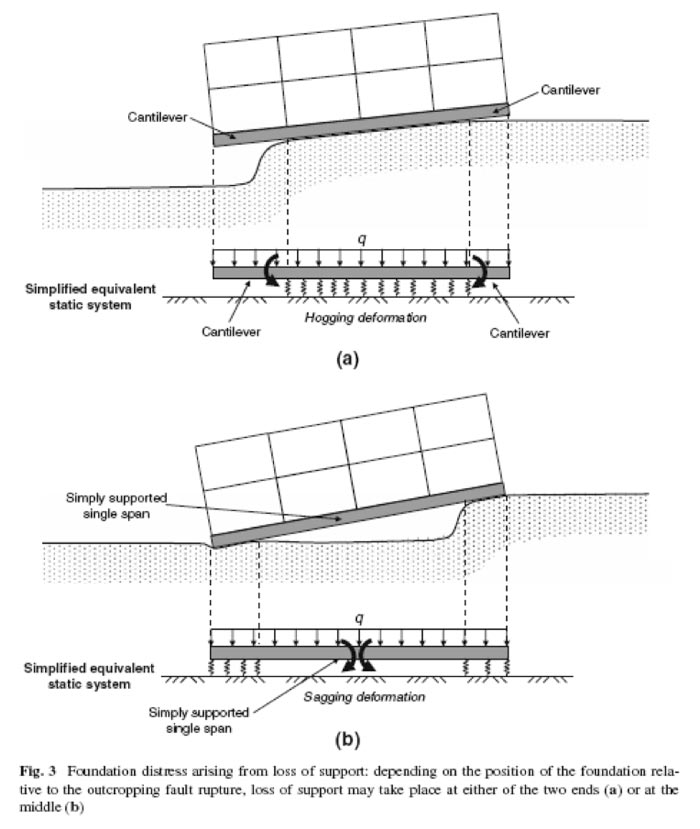[intro]
Over the past few decades, earthquake engineering research and practice has mainly focused on the dynamic response of structures and soil–structure systems to strong seismic ground shaking. These transient dynamic oscillations are the result of waves originating from different patches of a seismogenic fault, produced in sequence as rupture propagates and “slippage” takes place. In contrast, the engineering community has paid little attention to the more direct result of the faulting process: the quasi-static offset of the two sides of the fault. However, the three notorious 1999 earthquakes (Kocaeli, Düzce-Bolu, and Chi–Chi) generated substantial fault rupturing at the ground surface, crossing numerous structures, and providing a great variety of real case histories of fault–foundation–structure interaction, refueling, thus, the interest of the earthquake engineering community on the subject. The lab is a pioneer in the subject, developing the appropriate numerical tools for analyzing and designing structures against possible rupture break-out.
Fault Rupture Propagation through Sand: Finite-Element Analysis and Validation through Centrifuge Experiments
The first step in order to succeed in analyzing and designing structures against large tectonic deformation is to come up with a reliable numerical modeling methodology. To that end, the Lab developed a nonlinear finite element methodology to study dip-slip “normal” and “reverse” fault rupture propagation through sand, adopting an elastoplastic Mohr–Coulomb constitutive model with isotropic strain softening, which is introduced by reducing the mobilized friction angle and the mobilized dilation angle with the increase of octahedral plastic shear strain. The procedure is verified through successful Class A predictions of four centrifuge model tests.
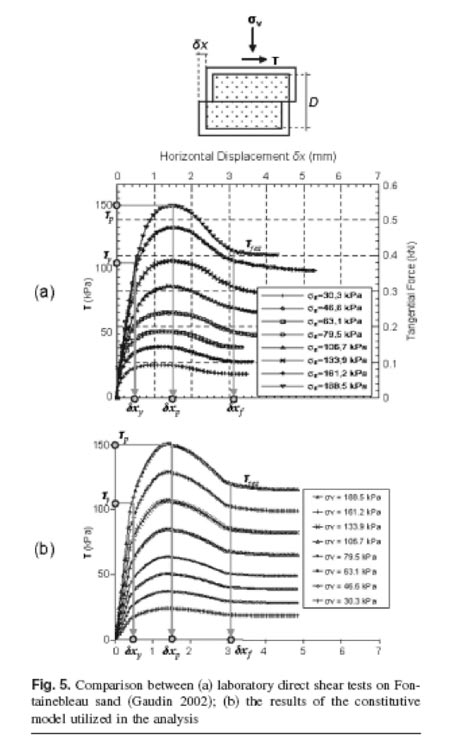
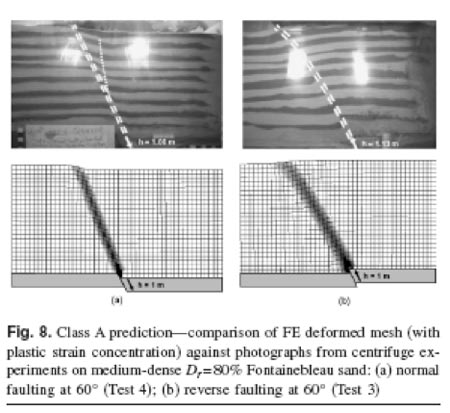
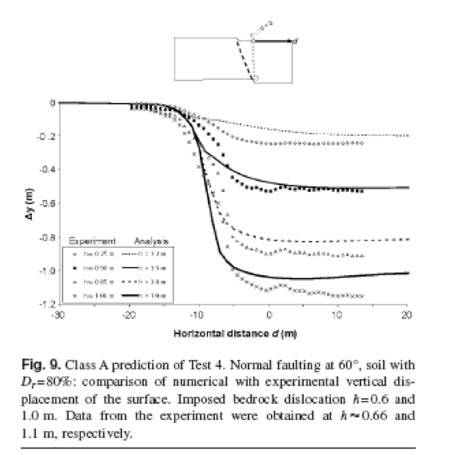
Foundation–structure systems over a rupturing normal
Fault: Analysis of case histories
Motivated by the observed (successful and unsuccessful) performance of numerous structures on top of, or immediately next to a normal fault that ruptured during the three 1999 earthquakes (Duzce, Kocaeli, Chi-Chi), the Lab developed a two-step finite element methodology to study the propagation of a fault rupture through soil and its interplay with the foundation–structure system. It is shown that the presence of a structure on top of an outcropping fault may have a significant influence on the rupture path.
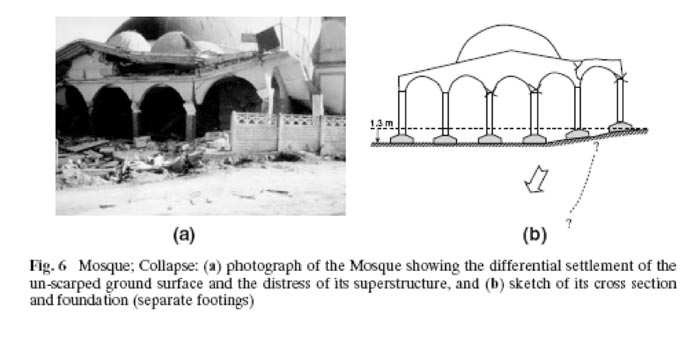
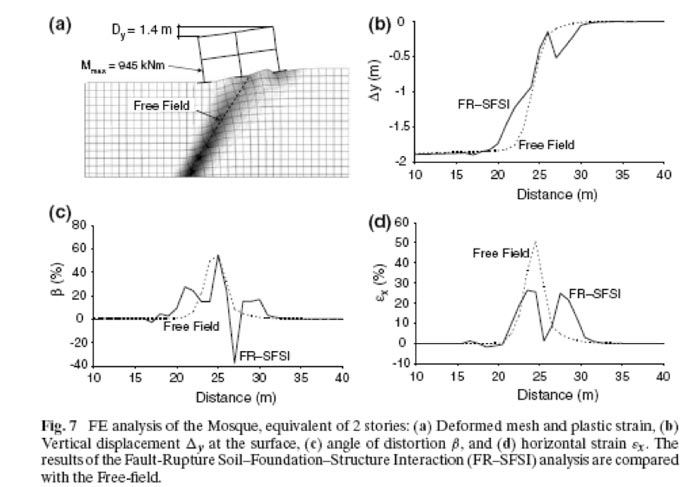
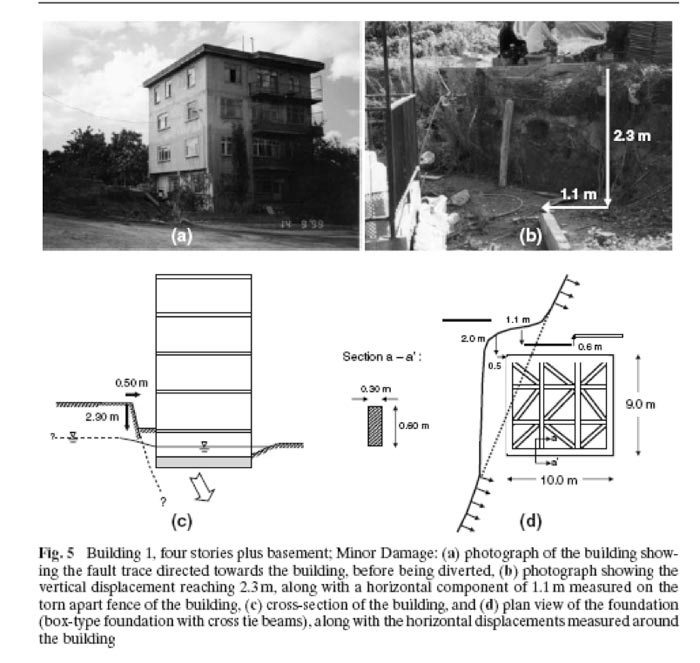
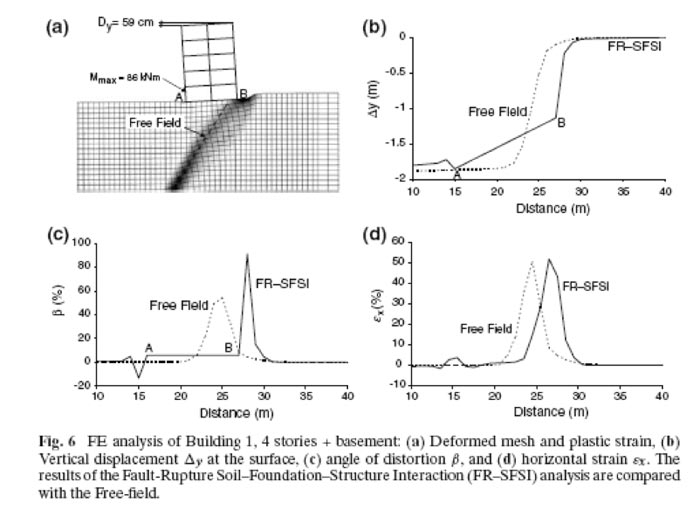
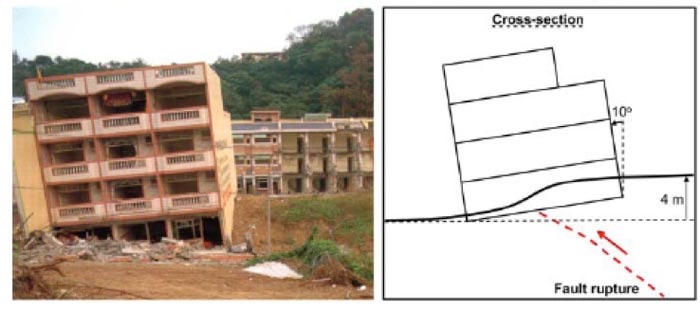
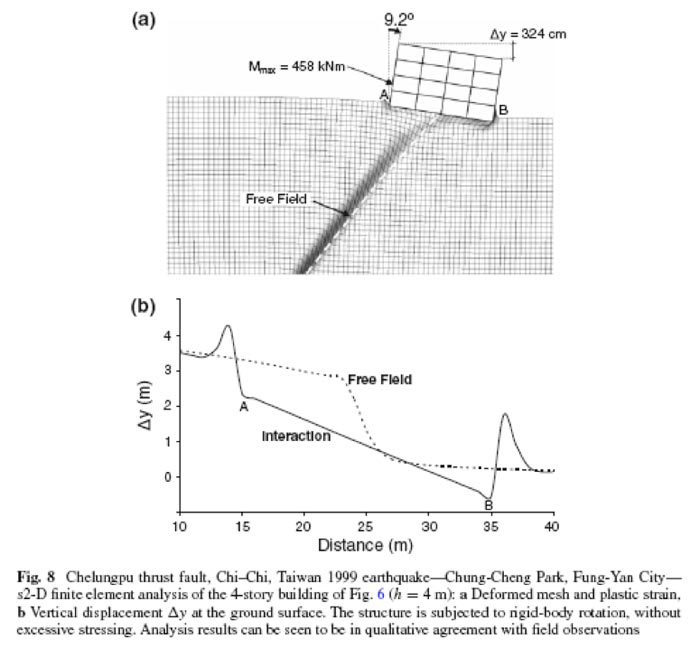
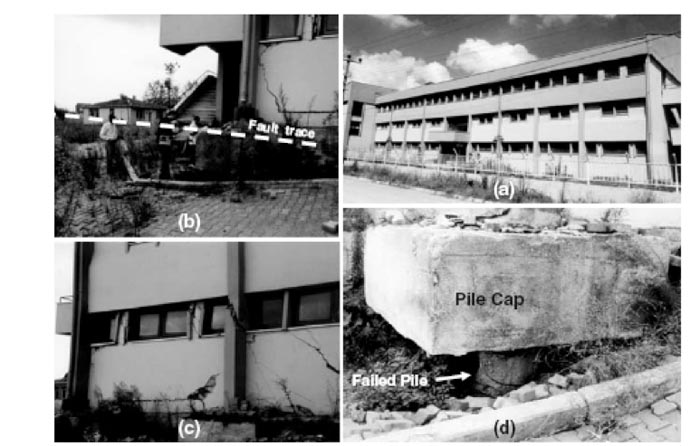
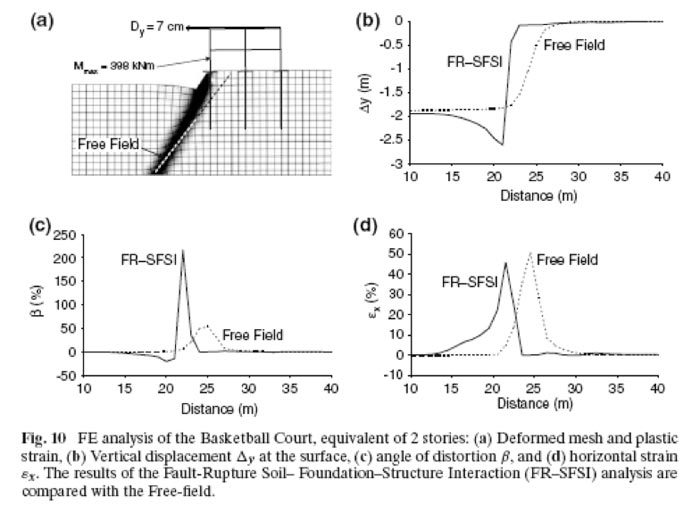
Numerical analysis of raft foundations subjected to normal fault
Having developed a reliable numerical method for analysis of structures subjected to fault induced deformation, a parametrical study is conducted with respect to the flexural and axial rigidity of the foundation system (e.g. thickness of mat foundation), the surcharge load of the superstructure, the stiffness of the superstructure (cross section of structural members, grid spacing), the soil stiffness and strength and the position of the structure relative to the fault rupture (distance s). This parametrical investigation gives a deeper insight of the response of slab foundations under tectonic deformation.
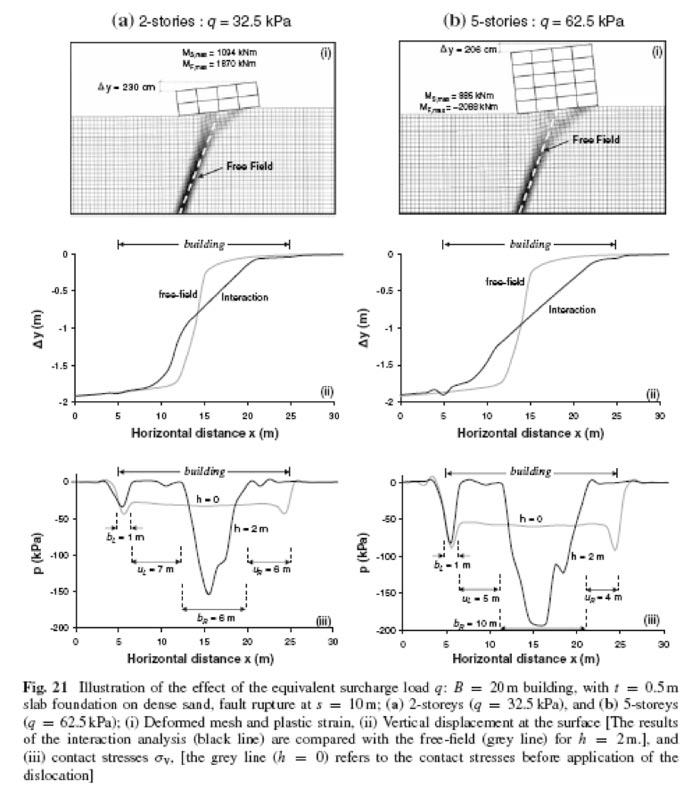
Simplified approach for design of raft foundations against fault rupture
Exploiting the parametric results of finite element analyses and centrifuge model testing, the Lab introduced a four–step semi–analytical approach for analysis of dip-slip (normal and thrust) fault rupture propagation through sand, its emergence on the ground surface, and its interaction with raft foundations. The methodology is divided in two parts. The first one, focuses on the effects of faulting in the absence of a structure (i.e., in the free-field), comprising two-steps: the first deals with the rupture path and the estimation of the location of fault outcropping, and the second with the tectonically induced displacement profile at the ground surface. In the second part, an approximate analytical method to analyze soil–foundation–structure interaction (SFSI) is developed, involving two additional phenomena: (i) fault rupture diversion; and (ii) modification of the vertical displacement profile. For the first phenomenon, an approximate energy–based approach is developed to estimate the diversion of a fault rupture due to presence of a raft foundation. The normalized critical load for complete diversion is shown to be a function of soil strength, coefficient of earth pressure at rest, bedrock depth, and the horizontal position of the foundation relative to the outcropping fault rupture. For the second phenomenon, a heuristic approach is proposed, which “scans” through possible equilibrium positions to detect the one that best satisfies force and moment equilibrium. Thus, we account for the strong geometric nonlinearities that govern this interaction, such as uplifting and second order (P−Δ) effects.
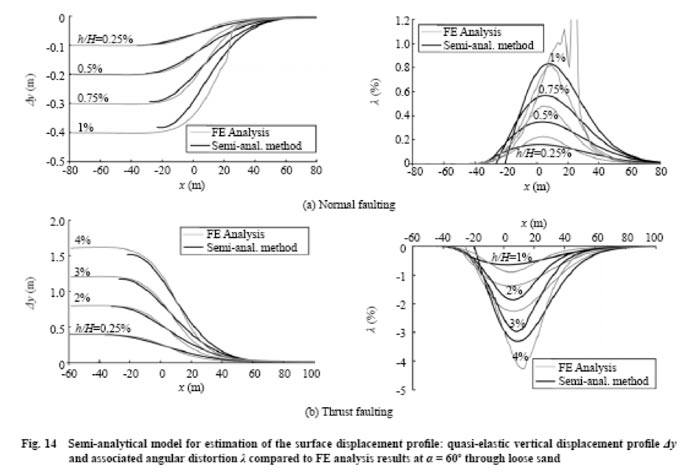
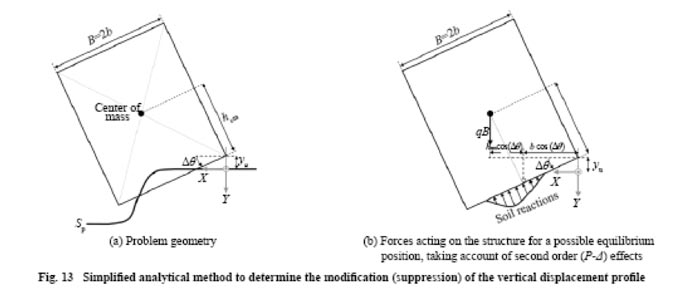
Design of bridges against large tectonic deformation
The Lab has introduced a methodology for design of bridges against tectonic deformation. The problem is decoupled in two analysis steps: the first (at the local level) deals with the response of a single pier and its foundation to fault rupture propagating through the soil, and the superstructure is modeled in a simplified manner; and the second (at the global level) investigates detailed models of the superstructure subjected to the support (differential) displacements of Step 1. A parametric study has been conducted, investigating typical models of viaduct and overpass bridges, founded on piles or caissons.
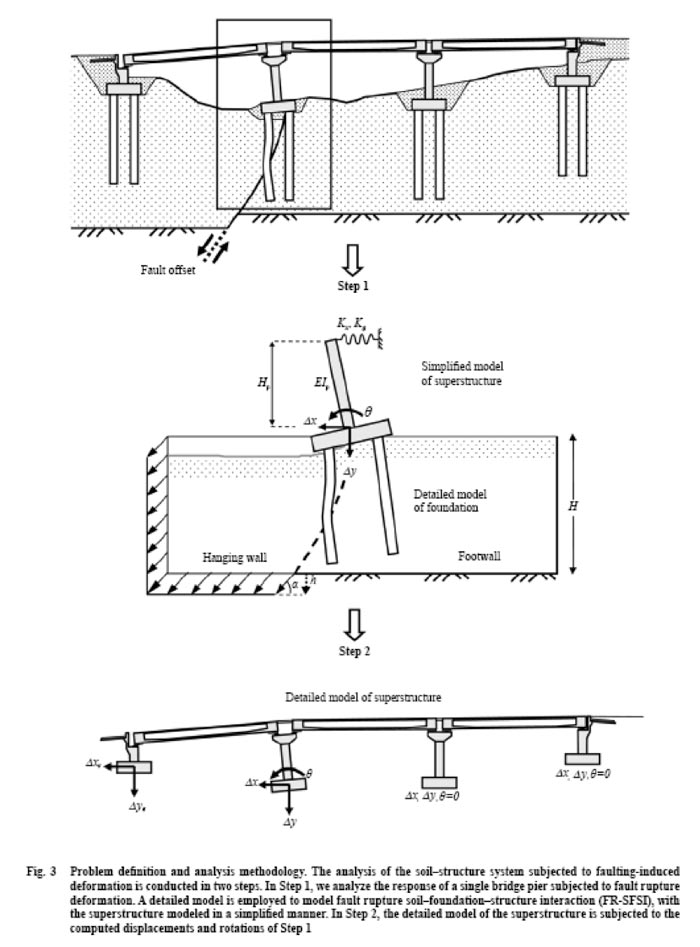
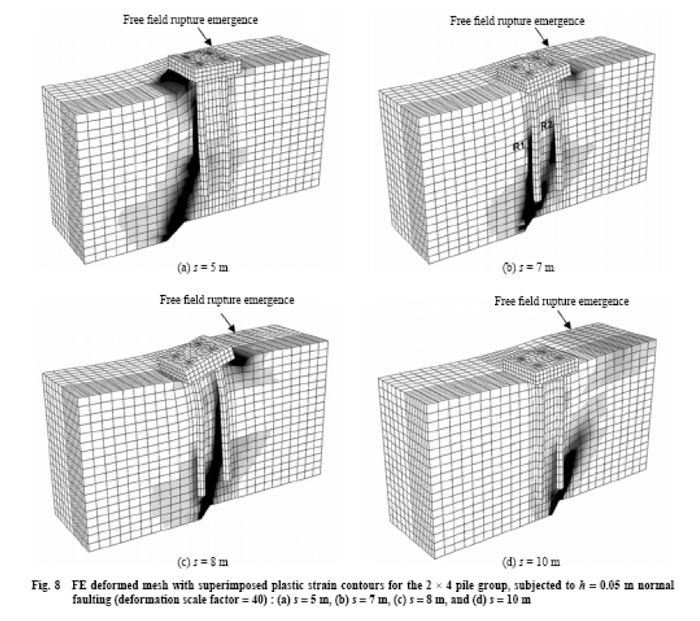
Preliminary design recommendations for dip-slip fault–foundation interaction
Though seismic codes and engineering practice had in the past invariably demanded that “buildings of important classes . . . shall not be erected in the immediate vicinity of tectonic faults recognized as being seismically active” (e.g.: EC8 1994), a such a strict prohibition is difficult (and sometimes meaningless) to obey. On the contrary, extensive research conducted by the Lab, comprising three interrelated steps, field studies, experiments and numerical/analytical modelling, has shown that structures in the immediate vicinity of seismically active faults can be designed to withstand tectonic dislocation, of course, after a special seismotectonic–geotechnical–structural study. On that basis, practical design recommendations suitable for developing future Code requirements on the subject are developed.
